Change Your Life
Sign up for a spring Fort DeSoto IPT. Details below.
What’s Up?
A Must Read for Everyone
The second 2024 San Diego IPT lost a morning to rain and the last two mornings featured difficult wind against sun conditions, but the amount of learning that went on was astronomical. Jeanette LaPorte arrived with her Canon EOS 5D Mark IV and a 100-400 II as a total beginner. Tom Baker, with his Olympus 100-400/OM 1 rig was more experienced, but his approach to bird photography was haphazard. Neither had a plan as to how to create a sharp, well-framed, properly exposed image. And both arrived with tripod heads that were a complete hindrance, totally unusable. Tom’s sidekick-type head and a RRS BH-55 ballhead cost more than $700.00 new and was totally unsuitable for bird photography. His RRS tripod was adequate but far over-priced. Jeanette was in the same boat with a flimsy tripod and a tiny ballhead that would have put her camera and lens at risk had she used it. Not to mention that framing an image and locking the head was a virtually impossible task.
We worked first on seeing the shot, looking for birds on the edges of the cliffs, ideally those standing on small rock mounds with distant backgrounds. Then we discussed the minimum shutter speeds needed when handholding. Next up was adding lots of light to the metered exposure when working in low light conditions and trusting the meter to plus or minus 1/3-stop when the sun was shining. (I came up with a great new teaching technique to drive home those points.) I showed both of them how to read the analog exposure scale in the viewfinder. Tom learned to use his in-viewfinder histogram to create more consistent exposures, and Jeanette learned to check the histogram and to enable and use Highlight Alert to check a test image. As both were using zoom lenses, the next step was to learn to frame the shot and use the camera’s AF system to come up with a decently composed image.
With the goal of having them become more consistent, we reviewed the steps needed to create a good image time after time:
1- See the shot.
2- Set a shutter speed that will allow you to create a sharp image.
3- Zoom in and out and select an AF mode or point that will yield the framing that you want, and ultimately, a pleasing image.
4- Set a good exposure by adjusting the ISO.
5- Keep the lens as still as possible.
6- Push the shutter button.
Both participants ended up understanding all the steps necessary to create decent images of birds.
As we kissed goodbye, I reminded them again of the many advantages of using a decent tripod topped by a Levered-clamp FlexShooter Pro:
1- Making sharper images at slower shutter speeds and correspondingly lower ISOs.
2- Slowing you down thus allowing you time to check your exposure!
3- Slowing you down thus allowing you to check your framing!
4- Enabling smooth, level panning when doing flight photography on a tripod. As both students were so deficient in the basics, we did not spend a lot of time on flight photography.
Galapagos and Homer IPT veteran Vasili Chernishof was very proud of his new $800.00 Gitzo ballhead when he arrived in San Diego for five days of bird photography. The plate that came with the tripod was huge, impossible to hand-tighten via the ridiculous flip-up twist lever (??), and could never be leveled properly. And every time that he loosened the head, his $10,000 lens flopped violently to one side of the other. Though his new $13,000 Canon RF 600mm f/4 lens was waiting for him when he got back home, he was still resisting my suggestion that he purchase a Levered-clamp FlexShooter Pro even though we did a half hour session in the lobby of a parking garage demonstrating the huge and numerous advantages of the spring-balanced ballhead that acts like a gimbal and can easily be leveled perfectly. And prevents ballhead flop.
In every blog post I offer to guide folks on the purchase of new gear. Few take advantage of this free offer and opt to spend hundreds or thousands of dollars on gear that will not do the job.
Today is Sunday 4 February 2024 and I am staying in to rest and pack up for the drive to Morro Bay on Monday. Wherever you are and whatever you are doing, I hope that you too have a great day.
Gear Questions and Advice
Too many folks attending BAA IPTs and dozens of photographers whom I see in the field and on BPN, are — out of ignorance — using the wrong gear, especially when it comes to tripods and more especially, tripod heads. And the same is true in spades when ordering new camera bodies or lenses. My advice will often save you some serious money and may help you avoid making a seriously bad choice. Please know that I am always glad to answer your gear questions via e-mail. If you are desperate, you can try me on my cell at 863-221-2372. Please leave a message and shoot me a text if I do not pick up.
Your Call?
Which of today’s seven featured images is your favorite? Which is the weakest of the lot? All are invited to learn by leaving a comment and letting us know why they made their choices. My favorite will likely confound everyone.
Please Remember
Please remember to use the B&H links that are found on most blog pages and to use the BIRDSASART discount code at checkout when purchasing your new gear from Bedfords to get 3% back on your credit card and enjoy free second-day air FedEx. Please, also, consider joining a BAA IPT. You will be amazed at how much you will learn!
If an item — a Delkin flash card, or a tripod head — for example, that is available from B&H and/or Bedfords, is also available in the BAA Online Store, it would be great, and greatly appreciated, if you would opt to purchase from us. We will match any price. Please remember also to use my B&H affiliate links or to earn 3% cash back at Bedfords by using the BIRDSASART discount code at checkout for your major gear purchases. Doing either often earns you free guides and/or discounts. And always earns my great appreciation.
My Call
In the last blog post, my favorite image was the square drake Wood Duck head because of the bright colors, the perfect exposure, and the sharpness.
That image led to the interesting and educational discussion below in the Comments section:
High Level Question (I doubt if anyone will get this one)
You are photographing a bird with lots of dark tones and some small bright white highlights — a drake Wood Duck or a drake Ring-necked Duck, for example, and are working in an automatic exposure mode — Shutter Priority, for example. The bird is swimming toward you. Why will you need to use more and more negative Exposure Compensation as the bird gets closer and closer?
Joel Eade. February 1, 2024 at 12:38:pm
My guess on your exposure question is that as the bird gets closer the bright white area is getting larger and thus represents more and more pixels in the final image. So, to keep the overall exposure optimum you have to dial in more negative compensation.
Arthur Morris/BIRDS AS ART. February 1, 2024 at 2:54pm
Good try, Doc. You wound up with the correct answer, “More negative compensation,” but your reasoning was faulty. Yes, the small white area get bigger as the bird gets closer. The bird, however, is predominantly dark so as the bird swims closer the dark dominates the bright whites more. Thus, you need more negative compensation to save to save the whites. In addition, the amount of white is such so so tiny that it will barely influence the meter.
That goes back to a basic principle covered in the original The Art of Bird Photography in the Exposure chapter — the larger a light or dark area is in the frame, the more it will affect the meter. Even though The Art of Bird Photography uses all film images, I still urge people to study and master the information there on exposure theory as it is completely relevant with digital capture.
with love and thanks for leaving a comment.
a
Joel Eade. February 2, 2024 at 8:50am
So, what you are saying is: the camera’s meter is reading the image as darker overall as the bird approaches and is thus trying to increase the exposure which will blow out the whites unless you dial in more negative compensation.
That’s interesting, is that true for all metering modes?
Arthur Morris/BIRDS AS ART. February 2, 2024 at 9:17am
Hey Joel,
Thanks for getting back to me on this.
You are correct.
As for “all metering modes,” the answer is yes, but not, of course, for spot metering. But again, as I wrote in the original ABP, using spot metering for birds with film was very difficult at best. With digital, using it is a total waste of time (and makes zero sense). As I have long said, folks who truly want to understand exposure need to study the chapter on Exposure and Exposure Theory in the original The Art of Bird Photography
with love, a
ps: As the drake Wood Duck fills more and more of the frame, there is less light water in the background to influence the meter reading toward underexposure …
Bill Eaton. February 1, 2024 at 7:21pm
As the bird gets closer there is less background affecting the exposure.
Arthur Morris/BIRDS AS ART. February 2, 2024 at 11:04am
Correct, as noted in my Reply to Joel’s second comment.
with love, a
|
|
|
This image was created on 1 February on the second 2024 San Diego IPT. Standing at full height, I used the handheld Sony FE 200-600mm f/5.6-6.3 G OSS lens (at 525mm) and The One, the Sony Alpha 1 Mirrorless digital camera. ) The exposure was determined using Zebra technology with ISO on the Thumb Dial. ISO 1600. 1/3200 second at f/7.1 (stopped down 1/3-stop in error) in Manual Mode. AWB at 3:37:14pm on a partly sunny afternoon. RawDigger showed the exposure to be dead solid perfect. Zone AF-C with Bird Face/Eye Detection performed perfectly. Be sure to click on the image to enjoy a high-res version. Image #1: Brown Pelican juvenile braking to land |
A Superb Flight Lens
Simply put, the handheld Sony FE 200-600mm f/5.6-6.3 G OSS is a superb flight lens for most folks. Spot-on accurate tracking AF is a given, and, as with Image #1, being able to zoom out can be a huge plus as the bird gets closer. That, when compared to a faster, heavier, fixed focal length lens.
A bit on the slow side at f/6.3, I did not use this lens in the cloudy, drizzly weather; it does, however, shine when the sun does. Or in cloudy bright conditions.
|
|
|
This image was created on 1 February on the second 2024 San Diego IPT. Sitting on the sidewalk and resting the back of my left hand on a steel railing, I used the handheld Sony FE 200-600mm f/5.6-6.3 G OSS lens (at 600mm) and The One, the Sony Alpha 1 Mirrorless digital camera. ) The exposure was determined using Zebra technology with ISO on the Thumb Dial. ISO 1000. 1/320 second at f/7.1 (stopped down 1/3-stop not in error) in Manual Mode. AWB at 3:44:58pm on a then cloudy bright afternoon. RawDigger showed the exposure to be dead solid perfect. Tracking: Expand Spot AF-C with Bird Face/Eye Detection performed perfectly. Be sure to click on the image to enjoy a high-res version. Image #2: Brown Pelican Pacific race, tight detail of resting bird |
Pelican in Green Heaven
You need to carefully choose your perspective when aiming to create the in-heaven look. In the image above, just the right amount of out-of-focus vegetation placed the pelican in a sublime setting. Had I gotten lower, the suffused green would have blocked our view of the bird. Had I got higher, I would have lost the in-heaven look.
|
|
|
This image was created on 1 February on the second 2024 San Diego IPT. Crouching to a level below the fence along the sidewalk I used the handheld Sony FE 200-600mm f/5.6-6.3 G OSS lens (at 600mm) and The One, the Sony Alpha 1 Mirrorless digital camera. ) The exposure was determined using Zebra technology with ISO on the Thumb Dial. ISO 1000. 1/250 second at f/6.3 (wide open) in Manual Mode. AWB at 4:05:59pm in the shade on a cloudy bright afternoon. RawDigger showed the exposure to be dead solid perfect. Tracking: Zone AF-C with Bird Face/Eye Detection performed perfectly. Be sure to click on the image to enjoy a high-res version. Image #3: Wet and Injured Brandt’s Cormorant |
Hurt and Bleeding
I saw this young Brandt’s Cormorant land and immediately noticed that it was absolutely soaking wet and that there was a gash in the back of its right foot and lots of blood on the rock. I surmised that it got smacked by a big wave as it attempted to climb up on the rocks Rockhopper Penguin style. He slept for a while and was gone within an hour. I am pretty sure that it would survive. The key to the success of this image was exposing far to the right; I went with the water totally Zebra-ed.
|
|
|
This image was created on 1 February on the second 2024 San Diego IPT. Standing at full height, I used the handheld Sony FE 200-600mm f/5.6-6.3 G OSS lens (at 318mm) and The One, the Sony Alpha 1 Mirrorless digital camera. ) The exposure was determined using Zebra technology with ISO on the Thumb Dial. ISO 2000. 1/500 second at f/6.3 (wide open) in Manual Mode. AWB at 4:37:17pm in the shade on a cloudy bright afternoon. RawDigger showed the raw file brightness to be 1/3 stop too dark. Tracking: Expand Spot AF-C with Animal Face/Eye Detection performed perfectly. Be sure to click on the image to enjoy a high-res version. Image #4: California Sea Lion mother kissing large pup |
California Sea Lions
There are a zillion sea lions in La Jolla. They are best photographed on cloudy days or in the shade. I rarely work them but when I saw these two kissing, I adjusted the exposure, went vertical, zoomed out, and clipped a flipper here and there in all but one frame of the series.
|
|
|
This image was created on 1 February on the second 2024 San Diego IPT. Crouching slightly and resting the back of my left hand on a steel railing, I used the handheld Sony FE 200-600mm f/5.6-6.3 G OSS lens with the Sony FE 1.4x Teleconverter and the (at 840mm) and The One, the Sony Alpha 1 Mirrorless digital camera. ) The exposure was determined using Zebra technology with ISO on the Thumb Dial. ISO 2500. 1/200 second at f/9 (wide open) in Manual Mode. AWB at 4:53:25pm in the shade not long before the sun disappeared for good. RawDigger showed the raw file brightness to be perfect. Tracking: Expand Spot AF-C with Bir Face/Eye Detection performed perfectly. Be sure to click on the image to enjoy a high-res version. Image #5: Brown Pelican Pacific race, tight detail of head and bill of resting bird |
The 200-600 & 1.4X TC is a Viable Combination
Whenever I need extra reach when going light with the handheld 200-600, I do not hesitate to add the 1.4X TC. And that is true even when the light levels are very low. With my new 2-step noise reduction (as detailed in the Digital Basics III Series), I do not shy away from ISOs in the 3200 to 20,000 range.
|
|
|
This image was created from two images made just a few minutes apart and combined using a Color Burn blending mode in Photoshop. Both images were made at 600mm in Shutter Priority mode with Auto ISO. The base image of the clouds and sky image at 1/3-stop, and the cormorant flight silhouettes at +1.7 stops. On 1 February on the second 2024 San Diego IPT. Tracking: Expand Spot AF-C for the sky and Zone AF-C with Bird Face/Eye Detection performed perfectly. Be sure to click on the image to enjoy a high-res version. Image #6: Brandt’s Cormorants returning at sunset |
Color Burn Blending Mode
I thought about combining the two images moments after I made them. I knew that it was likely that I could blend them successfully. I experimented with several of the blending modes without any success at all. But Color Burn got me on the right track. I did need to lighten the resulting image.
|
|
|
This image was created on 1 February on the second 2024 San Diego IPT. Standing at full height, I used the handheld Sony FE 200-600mm f/5.6-6.3 G OSS lens (at 374mm) and The One, the Sony Alpha 1 Mirrorless digital camera. ) Shutter Priority +2.0 stops. AUTO ISO set ISO 100: 1/15th sec at f/10. AWB at 5:24:04pm just after sunset. RawDigger showed the raw file brightness to be 1/3 stop too dark. Tracking: Expand Spot AF-C with Animal Face/Eye Detection performed perfectly. Be sure to click on the image to enjoy a high-res version. Image #7: Brandt’s Cormorants slow shutter speed abstract blur |
Abstract Blurs
This image features two birds. It is a fairly large crop. Handheld blurs made at shutter speeds slower than 1/30 second and those created when the lens is jerked or not panned smoothly will often result in images with an abstract flair.
|
|
|
Be sure to click on the composite to view a larger, high-res version. All images from 2023 Fort DeSoto Spring IPTs. Clockwise from upper left around to center: Snowy Egret in breeding plumage with crest blowing; Osprey striking; Brown Pelican sunrise silhouette; Royal Terns copulating; Marbled Godwit striding; Royal Tern courtship feeding; Snowy Egret hunting; Laughing Gull in breeding plumage along flight; Reddish Egret in flight with killifish. |
Unsolicited via e-mail from Pete Myers
I just spent 4 days in the field in a graduate course in bird photography taught by Artie Morris at Fort DeSoto. After almost 50 years of experience pointing cameras at birds from the Arctic to Tierra del Fuego, New Zealand and beyond, I thought I was good enough. But what I learned from Artie in just four days has taken me to a whole new level. As he aptly puts it, “birds as art,” not simply bird photography. One of those 4 days was the most satisfying I’d ever experienced, anywhere. The IPT left me euphoric about what I’d learned, and frighteningly committed to recreating my portfolio with the techniques and insights he taught me.
Unsolicited via e-mail from IPT veteran Eugen Dolan
Arthur, Thank you very much for your overwhelming infectious enthusiasm that helped get me up on some mornings. Also, your ability to express yourself- and explain in great detail why you like or may not like an image – was very helpful in allowing me to better analyze my images. Eugen
Via e-mail from Jim Miller
I can’t stop thinking about how much fun the DeSoto IPT was, and how much I learned. There were so many things that suddenly made perfect sense after I had been confused for so long. Thank you very much for the wonderful trip, and for being a great teacher. As I worked through the raw files last week, I realized what a fantastic lens the 600 IS is. Thanks for the rental! Maybe someday I will be able to afford one. Some images for critique are attached. Thank you again, Artie. It was really wonderful to be with you and learn from you.
Via e-mail from Lee Sommie
I want to thank you for making the Fort DeSoto IPT; it was a fun and educational experience for me. I truly did not want the adventure to end. I now look through the viewfinder with an artist’s mindset. And the real bonus was making new friends with fellow students. Thank you for sharing your knowledge and enthusiasm for wildlife photography. I had a great time with you and look forward to more adventures on future IPTs.
Via e-mail from Muhammad Arif
I had a great time at Fort De Soto. Thank you for all the instruction, for your help and pointers; my photography has already improved tremendously, and I’ve never made such good bird photos before. I wish I could’ve joined you on Monday and Tuesday morning as well, but work got in the way. It was also nice meeting the folks on the IPT. Thanks again for everything and I hope to join you at a future IPT sometime again.
|
|
|
Fort DeSoto in spring is rife with tame birds, many in full breeding plumage. Click on the composite to enjoy a larger version. Clockwise from upper left around to center: Laughing Gull landing on head of Brown Pelican, Laughing Gull in flight, Reddish Egret sunrise silhouette, Great Blue Heron with needlefish, Yellow-crowned Night Heron with ghost crab, Roseate Spoonbill, Sanderling in breeding plumage, and white morph Reddish Egret in glorious breeding plumage. |
The 2024 Spring Fort DeSoto Instructional Photo Tours (IPTs)
Spring Fort DeSoto IPT #1: THURS 14 March through the morning session on SUN 17 March 2024. 3 1/2 Days: $1899.00 includes three working brunches. Limit six photographers.
Spring Fort DeSoto IPT #2: Wednesday 8 May through the morning session on SAT 11 May 2023. 3 1/2 Days: $1899.00 includes three working brunches. Limit six photographers/Openings: 5.
Fort DeSoto, located just south of St. Petersburg, FL, is a mecca for terns and gulls, wading birds, and shorebirds in springtime. Though DeSoto can be great any day of the year, spring is my very favorite time to be there as many of the birds will be in full breeding plumage. Simply put, DeSoto is the new Ding Darling. Migrant shorebirds are in abundance, and many are exceedingly tame. We should have great chances on Royal and Sandwich Terns and both white- and dark-morph Reddish Egrets. Great Egret, Snowy Egret, Great Blue Heron, Tricolored Heron, and White Ibis are easy as well and we will almost surely come up with a tame Yellow-crowned Night-Heron or two along with some American Oystercatchers. We will enjoy lots of great flight photography, especially with the Brown Pelicans.
|
|
|
Again, Fort DeSoto in spring is rife with tame birds, most in breeding plumage. Click on the composite to enjoy a larger version. Clockwise from upper left around to center: Laughing Gull in flight, Yellow-crowned Night-Heron, Sandwich Terns copulating, Roseate Spoonbill, Great Egret with reflection, breeding plumage Short-billed Dowitcher, American Oystercatcher, Royal Tern, white morph Reddish Egret, and Snowy Egret in marsh. |
In Addition!
We should also get to photograph a variety of other shorebirds including Black-bellied, Semipalmated, Wilson’s, Snowy, and Piping Plovers, Willet, Dunlin, Short-billed Dowitcher, Marbled Godwit, and most especially, Red Knot. On the May trip, many of the shorebirds will be in their handsome breeding plumages. In spring the T-shaped peninsula and the newly formed sandbar, Outback Key, are literally packed with avian treasures.
With just a bit of luck, we may get to photograph one of Florida’s most desirable species: Roseate Spoonbill. And we will surely get to do some Brown Pelican flight photography. With luck, they will have Laughing Gulls landing on their heads. And though not guaranteed, Wood Stork might well be expected. And we will be on the lookout for a migrant passerine fallout in the event of a thunderstorm or two. I almost forgot to mention — Laughing Gulls in breeding plumage are to die for!
You do NOT need a fast super-telephoto lens to do this trip!
|
|
|
Yes, Fort DeSoto in spring is rife with tame birds, most in breeding plumage. Click on the composite to enjoy a larger version. Clockwise from upper left around to center: breeding plumage Dunlin, dark morph Reddish Egret displaying, Laughing Gull vertical front-end portrait, Laughing Gull with prey item, landing on head of Brown Pelican, breeding plumage Royal Tern displaying, Royal Terns — pre-copulatory stance, Laughing Gulls copulating, Laughing Gull head portrait, breeding plumage Sandwich Tern with fish, and a rare treat, a breeding plumage White-rumped Sandpiper. |
What You Will Learn on a DeSoto IPT
- 1- The basics and fine points of digital exposure; how to get the right exposure every time after making a single test exposure (or before if you are using SONY gear).
- 2- How and why to work in Manual mode (even if you’re scared of it).
- 3- How to approach free and wild birds without disturbing them.
- 4- Lots about bird behavior and how to use that knowledge to help you create better images.
- 5- To age and identify many species of shorebirds including various sandpipers, plovers, dowitchers, and possibly yellowlegs.
- 6- To spot good situations and to choose the best perspective.
- 7- To see, evaluate, and understand the light.
- 8- To design pleasing images by mastering your camera’s AF system.
- 9- And perhaps most importantly, to evaluate wind and sky conditions and understand how they affect bird photography.
- 10- More than you could ever imagine.
|
|
|
You got it by now! Fort DeSoto in spring is rife with tame birds, most in breeding plumage. Click on the composite to enjoy a larger version. Clockwise from upper left around to center: Roseate Spoonbill, immature Brown Pelican in flight, the heron/egret hybrid, American Oystercatcher feeding, immature Royal Tern on railing, Great Egret morning silhouette, Black Skimmer in surf, and underside head portrait of Great Blue Heron. |
The Details
Morning sessions will run two and one-half to three hours; afternoon sessions about two. There is never a set schedule on an IPT — we adapt to the conditions. On cloudy mornings with the right wind, we may opt to photograph till noon and skip the afternoon session. That especially when the afternoon weather is looking iffy. We may opt to visit a great North Tampa rookery if conditions warrant that.
There will be a Photoshop/Image Review session during and after brunch (included) each of the three full days. That will be followed by Instructor Nap Time. Each of these IPTs will run with only a single registrant as I do not like disappointing anyone. The best airport is Tampa (TPA). Once you register, you will receive an e-mail with lodging information. Do know that it is always best if IPT folks stay in the same general area (rather than at home or at a friend’s place a good distance away). For folks who register soon, the is an excellent chance that we can share an AirBnb to reduce lodging and meal costs and maximize your learning opportunities.
Folks attending this IPT will be out in the field as early as possible and stay out late to take advantage of sunset colors. Doing so will often present unique photographic opportunities, opportunities that will be missed by those who need their beauty rest and those who need to get home for a proper dinner. I really love it when I am leaving the beach at 9:30am on a sunny morning after a great session just as a carful or two of well-rested photographers are arriving … We will be getting wet.
Your non-refundable $599 deposit is due now. Credit cards are OK for that. You can register by calling Jim or Jennifer during weekday business hours at 863-692-0906 with a credit card in hand. Once you leave a deposit, you will receive an e-mail with your balance statement and instructions for sending your balance check three months before the trip begins. If you wish to pay in full right off the bat, you can make your check out to BIRDS AS ART and send it via US mail here: BIRDS AS ART, PO BOX 7245, Indian Lake Estates, FL 33855. You will receive a confirmation e-mail with detailed instructions, and clothing and gear advice two months before the trip. Please shoot me an e-mail if you plan to register or if you have any questions.
IPT veterans and couples or friends signing up together may e-mail for discount information. If you have any questions, or are good to go for one of these great trips, please let me know via e-mail or give me a call on my cell phone at 863-221-2372 for more info.
Typos
With all blog posts, feel free to e-mail or to leave a comment regarding any typos or errors.

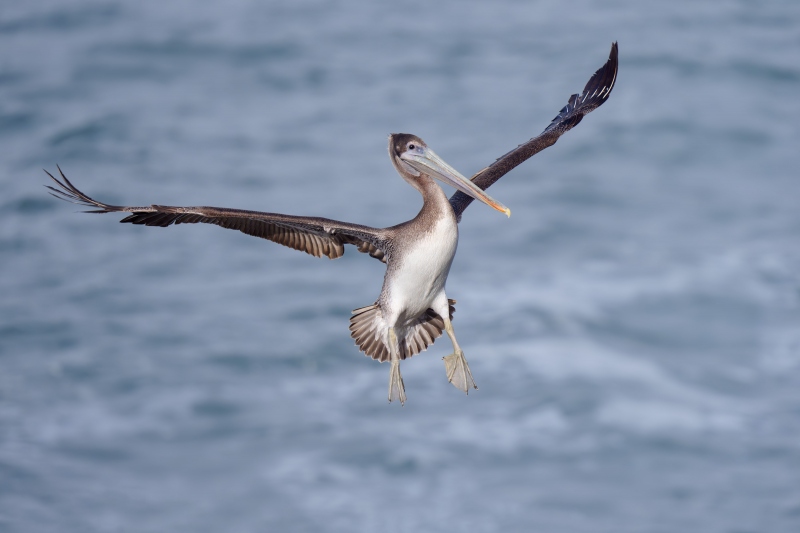
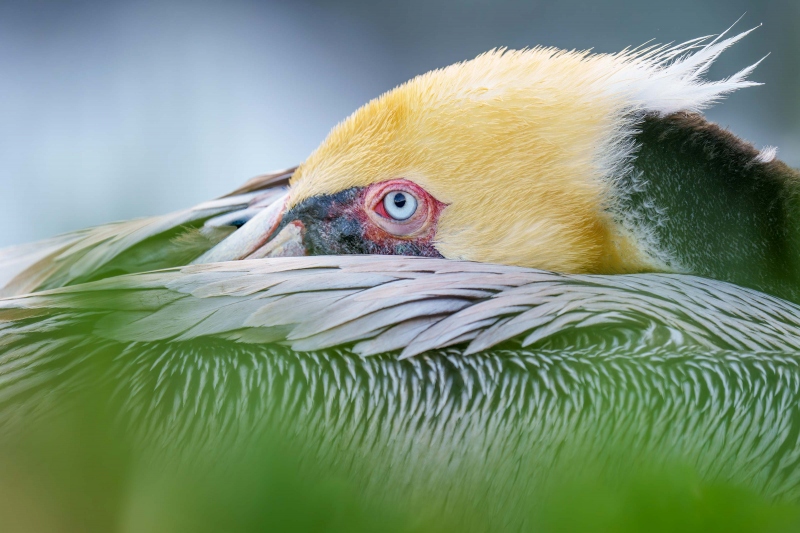
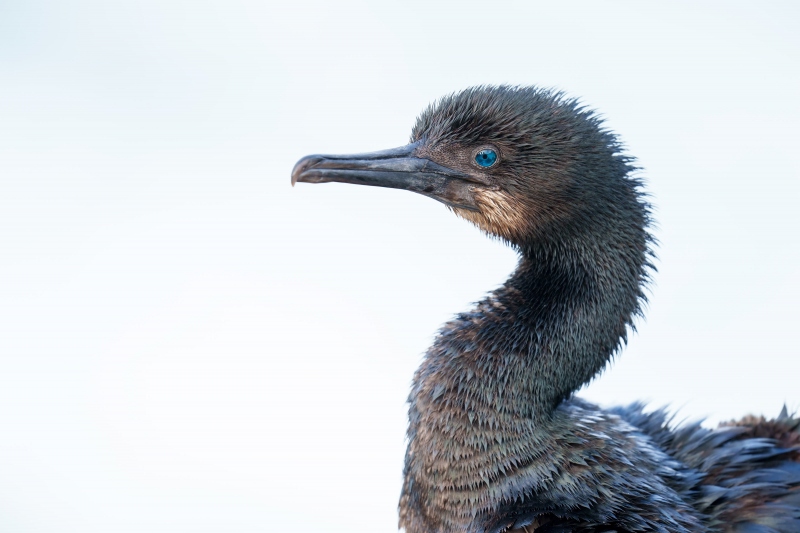
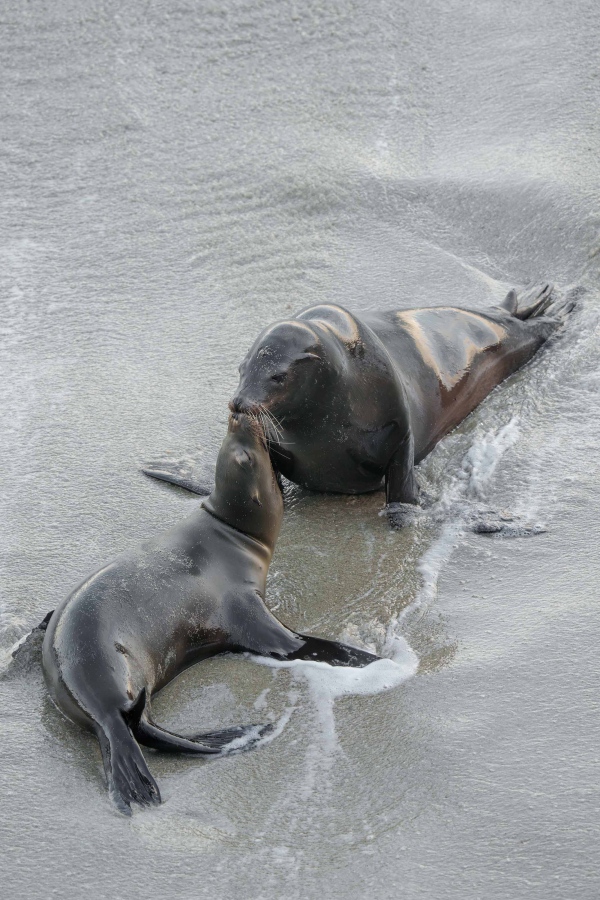
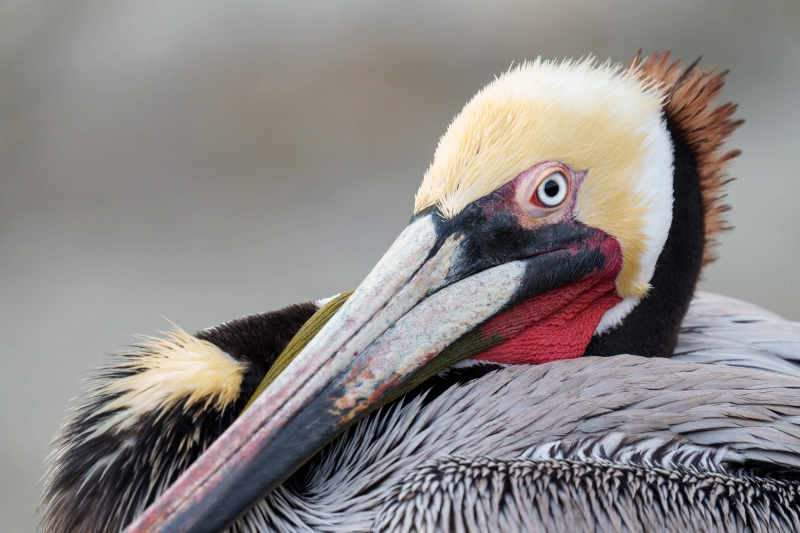
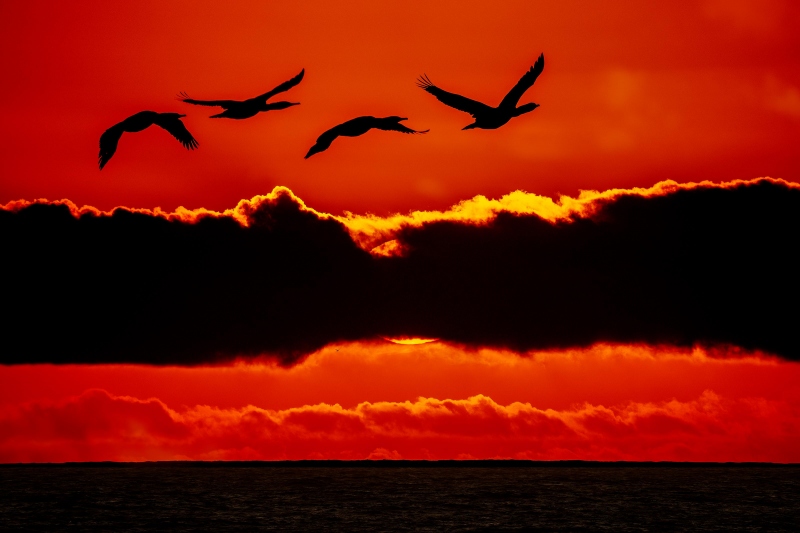
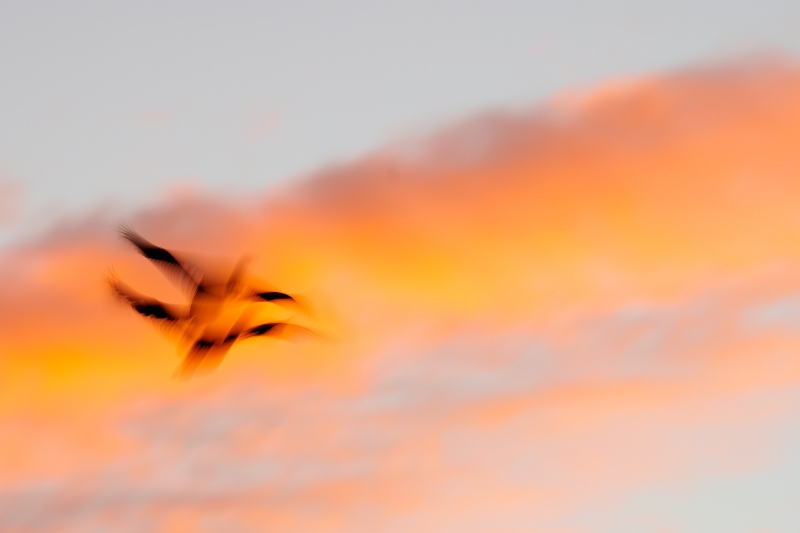
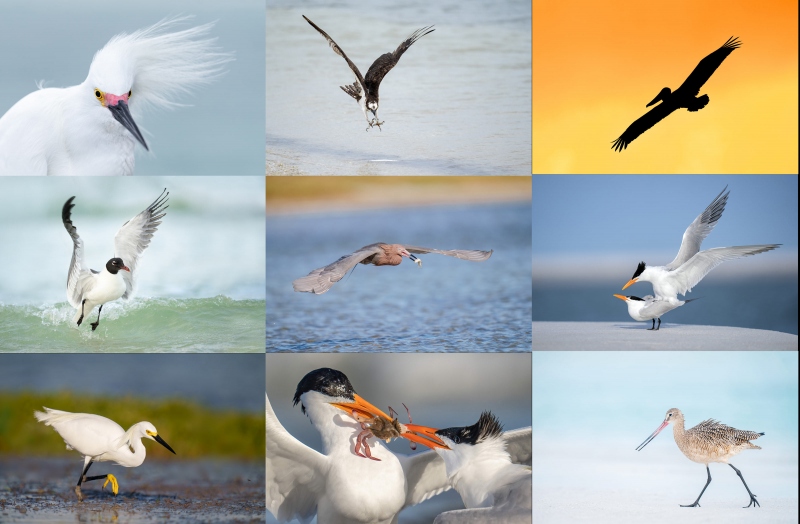
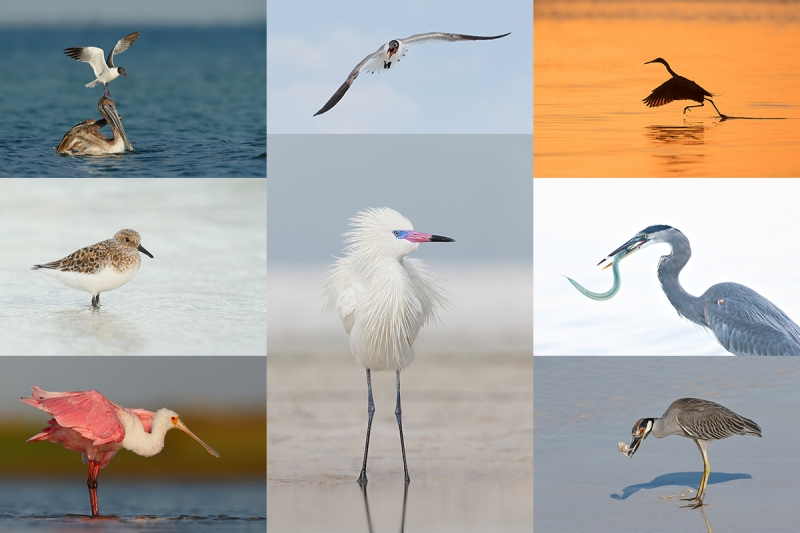
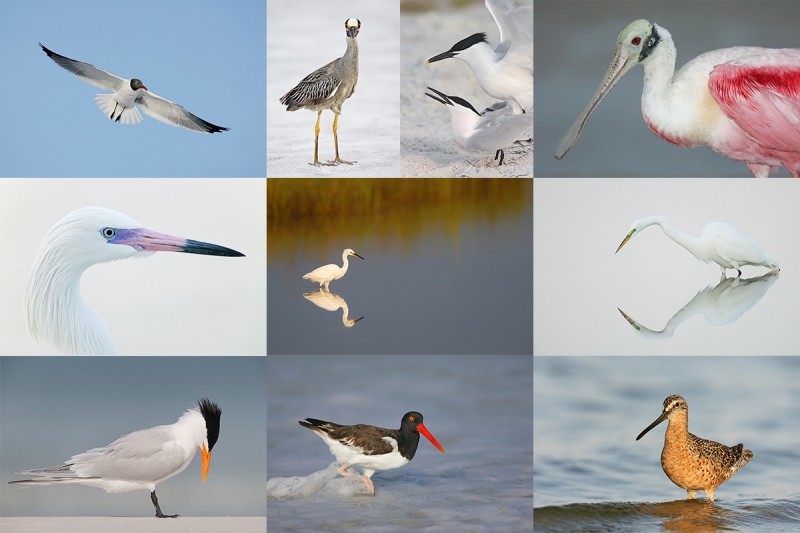
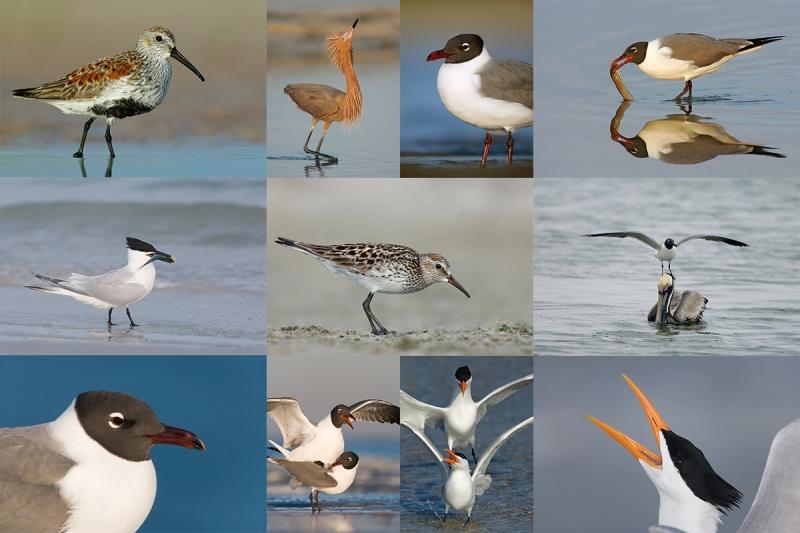
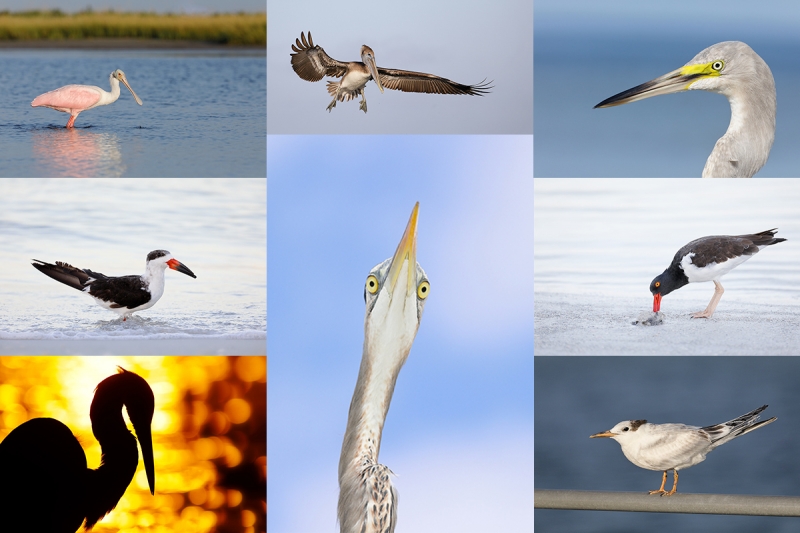













Artie, I have the Mongoose 3.6 head and really like it, if the camera falls over it is operator error. What is the difference between the Mongoose 3.6 and the Lever Clamped Flex Shooter Pro?
Monte. Thanks for your recent comments and questions. Both have been greatly appreciated. The Mongoose M3.6 is a great head for super-telephoto lenses. I used one for more than a decade and we sell a few each year. It is far lighter than the old standards, the Wimberley V1 and V2 heads.
With any system, folks should not be walking around with a big lens clamped on any tripod head. All of the manufacturers specifically deny liability should a clamp fail. In addition, it is much better for your shoulder to carry the lens in one hand and the tripod in the other when walking any appreciable distance.
And now to get to your question -:). The Levered-clamp FlexShooter Pro is a ballhead that acts like a gimbal. Once you level the black ball, you can point the lens in any direction and stays square to the world. The silver ball featured a counter-balanced spring mechanism that enables you to point the lens anywhere and have the lens sit like a dog. The levered-clamp enables you to mount the lens in two seconds without fiddling and removing it in one second if a good bird flies by overhead. Last is the bi-directional clamp the enables you to mount the camera with a short lens attached in addition to all telephoto lenses and telephoto zooms.
with love, artie
ps: click on the link and watch the video as I probably left a few good things out 🙂
I am placing a new order for the Levered-Clamp FlexShooter Pro Head 🙂
Vasili
I have one and it sucks……haha “not” it is the greatest of all heads and the lever to lock on off super and i know you’ll love it. Once you level the ball its good to go in all directions and that only take a few seconds to do. It is the best design i have ever come across.
Always with love b
PS and almost a new pair of glasses 🙂
Artie, my favorite is #7, the colors pop and the positioning of the birds in the frame is spot on. My least favorite is #3, I think the head needs to be pointed slightly more toward the camera.
I like #2 and 3. I would have liked #5 the best, and I do like the graphics of the image, however, it looks like the focus just missed the eye. Still, a great set of images. Good luck on the weather in SoCal this weekend. All the best
Vasili, purchase a FlexSooter!
Love a good “in heaven” shot so I’ll go with #2.
Image #1 and #2 and #3 and #4 and #5 and #6 are interesting. Image #7 looks like it is closed and you can’t see the birds well.
Images 2, 4 and 6…. Cannot choose which I prefer! Image 2 for the colours and ‘in heaven’ look. Image 4, for the aaaah, Image 6 for the wow! Image 7, a complete no-no for me!